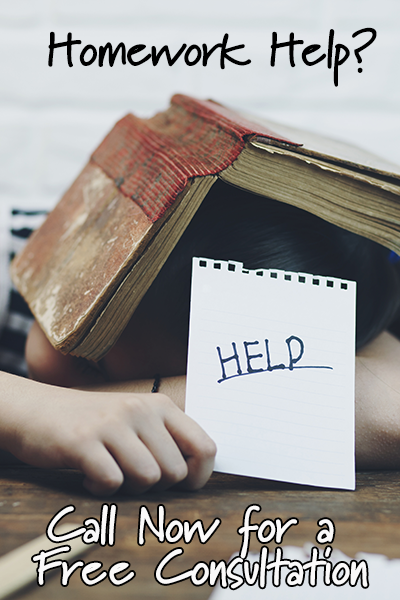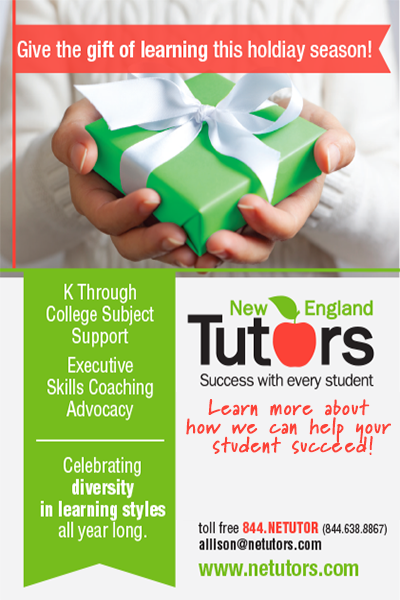 We all have a lot on our minds right now with the uncertainty of the Coronavirus and the shift to home-schooling This article, “How to Explain Coronavirus to a Child with Anxiety” was published by ADDitude Magazine and offers some useful tips to help you navigate the coming weeks. We are sharing the article in entirety and would like to recognize the authors: ADHD EDITORIAL BOARD, LIDIA ZYLOWSKA, M.D., ERINA WHITE, PHD, MPH, MSW
We all have a lot on our minds right now with the uncertainty of the Coronavirus and the shift to home-schooling This article, “How to Explain Coronavirus to a Child with Anxiety” was published by ADDitude Magazine and offers some useful tips to help you navigate the coming weeks. We are sharing the article in entirety and would like to recognize the authors: ADHD EDITORIAL BOARD, LIDIA ZYLOWSKA, M.D., ERINA WHITE, PHD, MPH, MSW
Coronavirus is scary for all of us. For children with comorbid anxiety disorder, school closures and health threats are downright paralyzing. Here are 11 expert tips for talking to your child about COVID-19, navigating the next few weeks at home together, and living with the constant hum of uncertainty in an ADHD household.
The last week has felt like one long news ticker — spiraling coverage of the novel coronavirus (COVID-19), compounded by a steady stream of school closures and event cancellations, video of toilet-paper battles in Costco, and one Presidential address after the other. With so much new, bad information coming to light each hour and so many questions left unanswered, families are feeling on edge — and with good reason.
For families living with ADHD, the impact of coronavirus may be more acute due to the common and serious comorbidity of anxiety disorder. According to a study published in the American Journal of Psychiatry, a quarter of children and teens with ADHD also suffer from an anxiety disorder. This comorbidity is a fact that’s inescapable to many families at this very moment.
Whether or not your child’s school has closed, you are suddenly tasked with the challenge of explaining coronavirus in a way that is factual and serious, yet not overly dire. Your child may have questions about death rates, travel risks, and contagions. You must respect your child’s need for information and reassurance, while also weighing how the daily news may cause his or her anxiety to spike. And you’ll need to do all of this while managing your own mental health, working from home, and playing endless games of Monopoly.
This is the Olympics of special-needs parenting. As such, we’ve called in some world-class experts to help us with their time-tested game plans for families living with ADHD and anxiety. Following is their advice for explaining coronavirus to your anxious child and navigating the days and weeks ahead with grace and deep breathing.
“While we all prepare and take precautions like washing our hands,” says Lidia Zylowska, M.D., a board-certified psychiatrist with expertise in mindfulness-based therapy for ADHD, “a critical part of the preparation is to not let anxiety and worry overtake our families.”
[Read This: “We Live in the Upside Down Now. Grace Is Pivotal Here in the Age of Coronavirus.”]
#1. Focus on the facts, understand the fear.
“What can help parents to manage anxiety is understanding the concept of intolerance of uncertainty,” Zylowska says. “Intolerance of uncertainly can drive worry and anxiety up the wall. It means that when something is uncertain, we tend to see it as dangerous, unsafe, or overwhelming. We can react with fear and avoidance or with frantic efforts to prepare for the unknown.
“In times like these, the question is not how to eradicate uncertainty, but rather how to learn to sit with uncertainty and not overreact. Can we learn to tolerate uncertainty a bit more? Can we imagine that while risks are present, things can be OK even if uncertain, and trust that we will be able to handle whatever comes our way?”
As much as possible, focus on the facts as we know them right now. Don’t try to predict the future or share Doom’s Day scenarios with your children. Projections aren’t helpful when no one knows for certain what’s ahead, and trying to guess may cause anxiety to run rampant. At the same time, understand that we are living in uncertain times and that will, naturally, cause justified worry.
“In the end, it is important for parents to acknowledge to themselves and to their children that anxiety, worry and, fear may be present; accept these feelings with compassion, and also learn to step back (at least a bit) from these fearful reactions. Focus on hope more than fear.”
[Download This: 9 Truths About ADHD & Intense Emotions]
#2. Acknowledge and manage your own anxiety.
“Children naturally look to parents to understand if they should fear something,” Zylowksa says. “Children are very good at picking up parents emotional energy, so it is really important to manage your own fear and anxiety and not amplify your child’s fears. This is even more important for parents of children who have an anxious temperament or have significant worry about something.
“Of course, this is easier said than done, especially when a realistic fear like coronavirus is around. I invite parents to check in with their own feelings and if they notice a lot of tension or stress, to do something to bring that down. That can mean relaxing body tension by softening the face and jaw muscles, dropping the shoulders a bit, and taking a few deeper breaths. When we do this, our voice and actions are often less tense and we are more aligned when we ask our children not to worry too much.”
[Click To Read: How Deep Breathing Opens Up the ADHD Brain]
#3. Bow out or be quiet when your anxiety spikes.
“We are our own kids’ first anxiety defense,” says Erina White, Ph.D, a clinical researcher at Boston Children’s Hospital and therapist in private practice who specializes in ADHD and anxiety. “They take their cues from us on how worried to be by the tone, pace, pitch, and volume of our voices.
“If you sense your own anxiety rising (or you notice yourself stuffing a million rolls of toilet paper into a closet) try (and I know this is hard) to take a deep breath and bring your own heart rate down. Over the last few days, when my anxiety was heightened, I tried to take frequent walks in nature, forcing myself to hear the birds, pat the animals, and feel the ground under my feet. I also hold my hand on my heart (or on the veins of my wrist) and try to lower the rapidity of the beats. When I’m in a good place I return to my family. If I’m not, I wait.”
#4. Start with a question. Follow with facts.
“Ask gently (don’t yell or over question) how your child is doing,” White says. “Let them tell you if they are worried or scared or have questions about COVID-19. If they do, have a well-informed discussion.
“Go to the CDC website (or another trusted source) and show them what the scientists are saying. Help them to understand that there are experts working on things as we speak and let them learn how to seek this knowledge in a scientific and thoughtful way. Try to discourage them from buying into social media posts, rumors or over-done media outlets.”
Note: Fueling many people’s anxiety is the spread of misinformation on social media and through unsanctioned videos on YouTube. Experts say the best source of information is the Centers for Disease Control and Prevention (CDC). The CDC has a webpage dedicated to Covid-19. Your state’s Department of Health is another source of information you can trust.
#5. Limit news exposure.
Remember, bad news is compelling and drives viewership. It drives up ratings, which in turn brings in more advertising dollars. Seeing images of people wearing masks in hospital wards and hearing coronavirus news reports all day long can increase distress in anyone, but especially in those predisposed to anxiety already. Experts say it’s a good idea to decrease your viewing time in common family areas of your home. If necessary, read news reports discretely on your phone away from your children. Be mindful of little ears playing nearby that overhear news reports you’re watching or hearing.
#6. Don’t over-share.
Children may have questions about germs and sickness and, in some case, even death. But unless they ask you directly, try to minimize conversation on the topic of illness. The best thing you can do is reassure them that legions of responsible adults are working hard to keep everyone safe and healthy. You can also point out that the reason so many gatherings are being canceled is that experts say that being at home is the safest place to be. Hearing that home is the safest, healthiest place to be is the most reassuring message your child can hear.
If your child is taking medication for anxiety and feeling more anxious, however, don’t hesitate to share your concerns with your psychiatrist or prescribing physician.
#7. Maintain a routine.
Children with ADHD thrive on routine. A sustained school disruption can be extremely upsetting for them. To offset this sudden and enormous change of schedule, try to put in place a reliable daily home routine. Wake at the same time each day; carve out blocks of time for academics, exercise, and entertainment; eat regular meals together, and remember that regularity is calming and reassuring.
[Download This: A Sample Routine for ADHD Families]
#8. Expect non-verbal signs of anxiety.
In young children, anxiety often manifests as behavior that is extra clingy, weepy, or irritable. Keeping diet and sleep routines as normal as possible will give children a sense of security. Extra hugs (and bedtime stories) along with some additional one-on-one attention will go a long way toward making an anxious child feel better.
#9. Try to play — and laugh.
Break out board games, build a house of cards, bake cookies, or take a family hike. Show your children that there’s an upside to all the cancellations. If a much-anticipated event or spring break is canceled, try to reschedule it for a later date so that everyone has something to look forward to.
“It is hard sometimes, but try to find the humor in things,” White says. “Joke about how all of our hands are rough and raw from hand washing and find some great smelling hand cream to use together. Joke about the reams of toilet paper, massive long lines at the stores, and empty shelves of goods. Try to find some humor in these things that seem so out of the ordinary. If you are especially free-spirited and adventurous pretend that this is ‘camping’ and set up a tent in the living room or make a game out of the ‘bunkered down’ house.”
#10. Remind your children of the altruistic purpose of self-quarantining.
“Oftentimes when kids understand the higher purpose of things, they can do some ‘meaning-making,’ which allows them to feel some control over their conditions,” White says. “For example, some may say, ‘We have to stay home now so that we don’t pass on the virus to others. We are going to be OK. Children are not at risk, but if we stay home we can make sure that grandma and grandpa stay healthy too…”
#11. Remember that this, too, shall pass.
“If you lay the foundation correctly, you can make fond memories for your kids about ‘that time when mom and dad tried to teach me when they were also doing their job,’ White says. “For a kid, this can be just another adventure, especially if we parents can help create this fun narrative. For us, juggling job, home-schooling (“Wait, now I’m a teacher and an employee AND a mom and an entertainer all in one?!”) is a daunting task, but if we all make it to the other side in one piece you and your children may be able to reflect back on the time when you self-quarantined to help the elderly and everyone had one long snow day without the shoveling.”
Coronavirus Basics
Of course, we would be remiss if we didn’t remind parents of the coronavirus basics:
If you have symptoms, reach out to your doctor.
For specific questions regarding individual health, contact your physician. Congestion, fever, and breathing difficulty should be brought to the attention of a healthcare provider. Understand however, that the flu is still a bigger concern than the coronavirus. Be proactive in seeking treatment but keep things in perspective.
Teach proper hand-washing techniques.
Regular and frequent hand washing is the number one way to kill the spread of germs. The CDC recommends washing hands with soap and water for at least 20 seconds (two rounds of the “Happy Birthday” song or saying the alphabet twice). If soap and water aren’t available hand sanitizer that contains at least 60 percent alcohol is an acceptable substitute. Help your child remember to wash hands before and after eating, after petting cats and dogs, after touching garbage, after using the toilet, and especially after blowing their nose.
Practice good, basic hygiene.
Avoid touching your face with your hands. Demonstrate how to cough or sneeze into a tissue and make tissues readily available throughout the home, especially in bedrooms, bathrooms, and the kitchen. Discourage sharing food and beverages, and remind children to avoid people who are sneezing or coughing. Handshakes are another no-no right now. Instead, greet people with a wave or challenge your family to make up their own healthy version of a no-contact greeting.
Clean and disinfect your home but don’t overdo it.
Wear disposable gloves when cleaning and disinfecting and discard them after each cleaning. Clean surfaces (counters, frequently touched cabinets, and drawers) with mild soap and water. Disinfect with diluted household bleach or alcohol solutions (follow manufacturer’s instructions.) Vacuum and dust as you normally would. Clean your cell phone as well, according to its manufacturer’s instructions.
Launder with care.
If someone in your home is ill, launder their clothing separately and use disposable gloves — designated for this purpose — when handling their clothes, linens, and towels. Explain to children that this is temporary and special treatment during the next few weeks and that things will go back to normal eventually.
Updated on March 13, 2020











